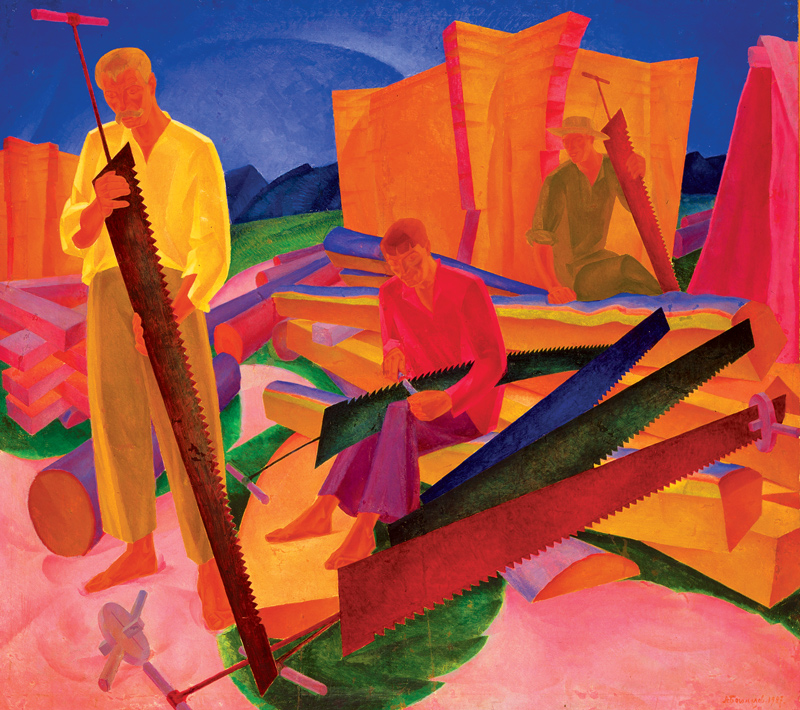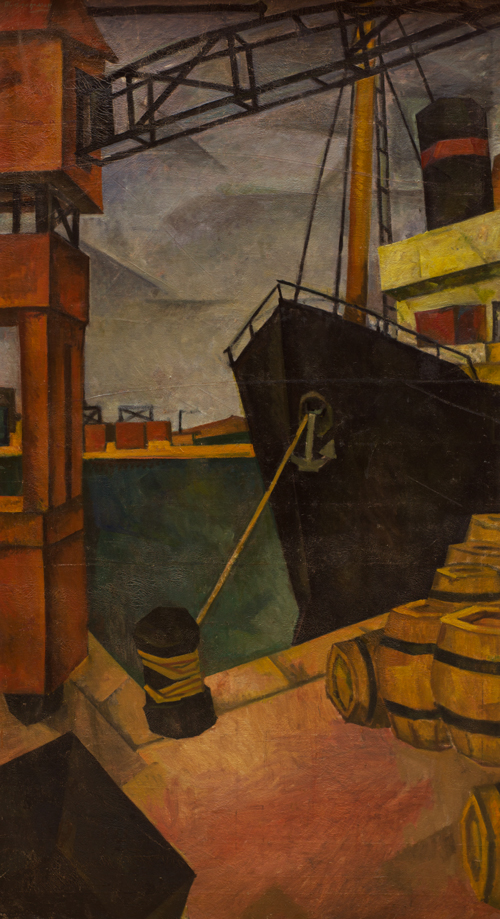Over the last few weeks, coming to the MFA has helped me find some peace while an outrageously cruel war goes on in my homeland, Ukraine. Each time I visit, I find myself gravitating toward Silhouette Geometrique (1913), a beautiful sculpture by Oleksander (Alexander) Archipenko on the first-floor European art galleries. When I see it, I can’t help but think about the history of Ukrainian art over the past hundred years.
In 1934, the Lviv National Museum acquired a different Archipenko sculpture, Ma (1932). After the occupation of Lviv by the Soviet Army in 1939, this work was taken off view and added to a list of forbidden art known as the “Special Fund.” The Soviets planned to destroy it along with thousands of works of art from the Ukrainian avant-garde. For Soviet authorities, it was crucial to obliterate Ukrainian history, culture, and self-identification. The avant-garde itself was a target. By the end of the 1930s, throughout Ukraine, works of cubism, futurism, expressionism, and other modernisms that hadn’t been destroyed were added to the Special Fund. But the Soviets forgot about this forbidden collection during World War II, and it survived.
Since the fall of the Soviet Union, many exceptional works from the Special Fund have been on view in museums across Ukraine. But after the Russian military invaded on February 24, 2022, they were taken off the walls once again—only this time, they were hidden away for safekeeping. Russia, as a successor to the USSR, aims to erase the Ukrainian nation together with its history and cultural heritage.
I invite you to take a look at some works by Archipenko’s contemporaries from Kyiv’s National Art Museum of Ukraine that survived the 20th century: paintings by Ukrainian avant-garde artists Oleksander Bogomazov (a friend of Archipenko’s from college), Tymofii Boychuk, Victor Palmov, and Teofil Fraerman. Unlike Archipenko, who moved to Paris in 1908 before immigrating to the United States in 1923, these other artists stayed in Ukraine and joined the Communists in an effort to build a brave new world. Together with other Ukrainian artists, they depicted new Soviet men and women and achievements of industry. Unfortunately, many were eventually accused of being spies, and the KGB executed most of them by 1937. Whoever survived the physical destruction of Ukrainian artists, scientists, and intellectuals lost their freedom and identities. They lived in fear for the rest of their lives. Archipenko was lucky he left; plenty of his works have been preserved in the US for the future generations of Ukrainians—and the world—to treasure.




The MFA is offering a free general admission ticket to those with a Ukrainian passport through Labor Day.
